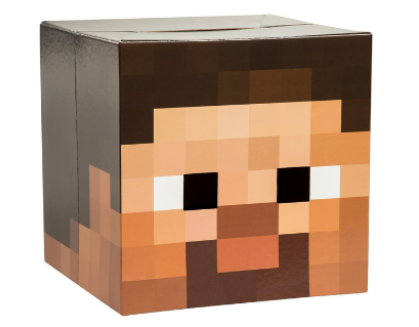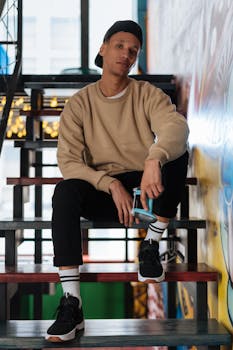Game-inspired gear pops up across city streets, whether on hoodies, sneakers, or unexpected accessories. These looks turn digital worlds into real-life expressions, getting noticed everywhere from fast fashion outlets to runway collections.
Gamers don’t just stay at their consoles—they bring their favorite characters, colors, and iconic logos into everyday wardrobes. Style now borrows elements from both virtual adventures and nostalgia for classic titles, creating unique blends.
This guide explores the surprising ways gaming culture leaves its mark on how we dress. If you’re curious why pixelated prints and e-sports logos are everywhere, you’re in the right place to learn strategies, scenes, and shopping tips.
Spotting Real-World Game Looks: What Specific Details Signal Influence?
Animated characters and game graphics aren’t just backdrop—they directly shape what ends up in stores. Observe which wardrobe items reflect these gaming roots: color palettes, symbols, and exaggerated proportions are key cues you can spot yourself.
The quickest way to recognize game-inspired fashion is by checking for instantly familiar visuals—think Mario reds, Zelda greens, or PlayStation’s geometric forms. These details show up as prints, embroideries, or silhouettes, providing strong hints.
Art-Driven Patterns Make an Immediate Statement
Graphic tees use cover art, in-game icons, or even cutscene frames. Streetwear label releases suddenly sell out because of these graphics, which people recognize faster than conventional patterns. Try scanning racks for bold, blocky colors and stylized figures.
Shoe designs might reference controllers or cartridges in their shapes. Popular sneaker drops echo the look and feel of limited-edition game hardware. Pair such shoes with basics to let them stand out without overloading your outfit.
Backpacks and hats show subtle nods through zipper pulls or embroidery featuring recognizable pixel art. These details can turn an everyday accessory into an inside joke for fans. Look for hidden logos or level-up motifs.
Layering with Game Worlds in Mind: Dialogue for Daily Outfits
When someone says, “That jacket’s just like the one in Street Fighter IV,” they’re naming a style cue seen in-game. Layering oversized bombers or cropped moto jackets channels those character aesthetics outside of cosplay events.
Color blocking—pairing neon-bright panels with dark neutrals—resembles game menu layouts. If someone points out a color combo by naming a specific game, you know you’ve nailed the look. Think: a blue hoodie and red sneakers hinting at Sonic’s vibe.
Experiment with items tied to power-up logic, like adding one bold patch or sleeve. By just swapping a plain sleeve for a bright, logo-heavy variant, you echo upgrade mechanics found inside the game world. Mimic these layering styles to showcase your gaming roots.
| Fashion Element | Typical Example | Game Reference | What To Try |
|---|---|---|---|
| Sneaker colors | Red and blue mix | Sonic or Mario | Coordinate socks or laces to match theme |
| Oversized jackets | Biker or bomber style | Street Fighter, Cyberpunk | Add pins or patches hinting at game icons |
| Graphic tees | Pixel art prints | Super Mario, Pac-Man | Layer under neutral over-shirts for balanced contrast |
| Snapback hats | Logo embroidery | Nintendo, E-sports teams | Choose minimalist designs for versatile looks |
| Utility vests | Multiple pockets, functional | Call of Duty, Fortnite | Style over hoodies for a tactical vibe |
Translating Avatars to Outfits: Staging Real Scenes
Game avatars don’t just inspire cosplayers. People borrow armor, color stories, or accessories from digital characters, translating them into wearable statements for concerts, hangouts, or weekend errands.
If a friend says, “That top looks like Lara Croft’s,” they’re spotting this translation in action. Approach your closet like building a loadout: pick and match signature gear just as you’d prep for a quest.
Actionable Checklist: Dressing with a Character’s Flair
Think about your favorite in-game outfit and select one key element—like a hoodie color, signature cargo pants, or boots. Use this as the base item for your real-life ensemble.
Add subtle props or accessories, echoing belts, gloves, or badges. It keeps things playful without veering into full-costume territory. Experiment with two contrasting items: one flashy, one understated.
- Match outerwear to video game hero’s practical side for outdoor events—think bomber jackets, windbreakers, or weather-resistant sneakers to channel readiness and resilience.
- Pick color combos referenced in the game to evoke immediate recognition—use bold, blocked primary colors so fellow fans notice the homage at a glance.
- Pair vintage-wash denim with pixel graphics for an easy, nostalgia-driven update; this mixes throwback cool with gamer pride and catches eyes without much effort.
- Layer streetwear basics with signature, game-inspired scarves or wristbands; this approach works for those who want low-commitment, high-visibility style swaps.
- Edge up looks by adding chunky boots or sporty trainers reminiscent of characters’ iconic footwear for comfort and instant references.
Working from a specific character reference lets you mix up new combos that feel organic, not forced. Rotate a few key items to prevent overdoing the theme.
Mini Scenario: “This Fits My IRL Quests”
Before heading to a concert, someone might say, “I need a jacket as bold as Cloud’s from Final Fantasy.” They dig through their closet, mixing a cropped jacket with black boots for attitude.
In a group photo, pixel-gridded shirts and colorful accessories stand out. The squad looks coordinated yet personal—blending their unique tastes with shared fandom cues.
- Select an accessory to act as your conversation starter, like a neon backpack with retro symbols—this sparks dialogue with fellow enthusiasts in public or at events.
- Limit character graphics to one clothing piece per outfit, avoiding full “costume” effect. Command respect for balance by keeping the rest neutral and sleek.
- Contrast one statement item, such as pixel-print pants, with basic black or white for a polished game-inspired look that works at school or work settings.
- Opt for functional gear—cargo vests, belts, or pouches—if you’re attending conventions, as this echoes RPG inventory logic and keeps essentials handy.
- Switch up your gaming gear by season, swapping in windbreakers for spring or logo scarves for fall, to refresh your look and reference current in-game events.
Using these practical examples, it becomes easy to build fresh styles from gaming roots while staying wearable anytime. Try one of these tips before your next outing.
Cultural Crossovers: When E-Sports and Streetwear Collide in Stores
Game teams, players, and tournaments increasingly work with streetwear brands. The outcome? Big releases—like hoodies or snapbacks—worn in both stadiums and skate parks across the country.
Brand Partnerships Boost Everyday Fandom
When a company launches a limited streetwear drop with an e-sports team, fans rush online—and in real life—to snag pieces. The item feels like part club membership, part collectible.
Wearers blend branded gear into standard outfits, not just at events but at coffee shops and concerts. The message: “I’m plugged in, and proud of it.” Even low-key fans spot these cues and respond.
Some releases include exclusive rewards: hidden codes for in-game skins or access to members-only parties. This creates a loop where fashion and gaming feed into each other, keeping trends dynamic and fresh year-round.
Boutique Labels Borrow Player Style
Small-run brands study how pro gamers dress outside tournaments. They adapt baggy silhouettes, performance fabrics, or layered accessories, making them accessible to anyone—not just those with event passes.
These indie designers sometimes add cheeky nods: controller-shaped zippers, stat-tracking tags, or “pause” embroideries on hats. Shoppers might spot an item and say, “That’s clever, like level-up badges for my daily routine.”
By tracking what streamers wear in casual settings, labels forecast next year’s color or accessory wave. Copying a piece from your favorite player’s off-stage look personalizes your own style—and shows you’re part of an evolving scene.
Comparing Online Versus Offline Play: Testing Fashion Boundaries
Online communities set trends faster, spreading styles from avatar mods to global markets. Offline, you see which bold looks survive school dress codes or workplace culture, revealing what transitions easily to daily routines.
Someone might say, “My guild’s group look is fire, but I’d tweak it for campus.” Digital-first styles often get edited for comfort, fit, or function before making public appearances. This back-and-forth shapes what lines the racks.
| Style Source | Online World | Offline Outfits |
|---|---|---|
| Color schemes | Neon, high contrast | Muted, selective splashes |
| Layering | Armor, wings, capes | Jackets, vests, scarves |
| Accessories | Oversized props | Smaller pins, patches |
Review your favorite avatar’s look, then test one or two features IRL. If a digital badge feels right as a backpack patch, wear it—small steps keep style grounded and authentic.
Mixing Digital Symbols with Classic Street Staples: Creative Layering
Picture the game world as an inspiration board. Just as street artists remix shapes and stencils onto old brick walls, gamers blend logos and vibrant prints into classic jeans or hoodies for personal looks.
Instead of head-to-toe branding, smart stylists steal just one or two eye-catching images—a controller, a power star—placing them where they’ll spark attention. This approach balances statement pieces with everyday basics.
One friend might show up in a Legend of Zelda tee under a thrifted blazer, making the reference subtle enough for work but fun enough for after-hours. Another adds bold socks covered in Mushroom Kingdom icons to break up a neutral look.
Everyday fashion functions a lot like game modding: you add layers and details that reveal your interests, but you pilot the end result. Try swapping out a plain phone case for one with pixel art if you want a quick, reversible upgrade.
Power Moves for Gamified Streetwear: Integrate Tactics That Work
- Start with sneakers that match game franchise color codes, because this makes your reference clear even at a distance—you can spot similar fans in public easily.
- Add a controller keychain to your backpack; it’s portable, small, and opens easy conversations with strangers who love the same games.
- Layer a basic logo tee under a patterned shirt so the reference is subtle—great for office-casual settings where direct graphics aren’t allowed.
- Choose one oversized outerwear piece, like a utility vest, for conventions. You gain storage and hit the tactical style of your favorite FPS without carrying props.
- Pick one seasonally themed accessory, such as a winter scarf in rival e-sports team colors, to keep your look both fresh and relevant to upcoming tournaments.
- Swap basic wristbands for ones printed with achievement icons, reminding you and friends of your progress and in-game moments throughout the day.
Mixing just two or three tactics from above ensures outfits feel new and attentive to real-world situations. Don’t overload; focus on high-impact, easily swappable pieces for flexibility.
Every item you choose should have a reason: does it reference nostalgia, signal your fandom, or invite others for a chat? Use intentional layers and well-placed accessories to shape your statement.
Gaming-Inspired Trends in Your Closet: A Style Recap
Game worlds consistently fuel new streetwear and fashion concepts. Pixel graphics, recognizable colors, and accessory choices transform individual style into group identity. This approach brings digital creativity into real spaces—parks, campuses, even offices.
Borrowing from game aesthetics doesn’t require cosplay-level commitment. Flexible tactics—layered styling, bold color contrast, or playful accessories—keep looks practical and expressive. These micro-adjustments encourage new ways to connect with likeminded people.
E-sports collaborations, indie labels, and everyday outfits prove game culture leaves a long-lasting impression. By noticing trends and tweaking personal style, anyone can participate meaningfully in an evolving, tech-driven street fashion scene.
Game-influenced clothing will keep evolving as franchises grow and design tools shift. Stay engaged by experimenting with small changes, sharing stories, and using wearables to highlight your unique perspective within shared genres.

